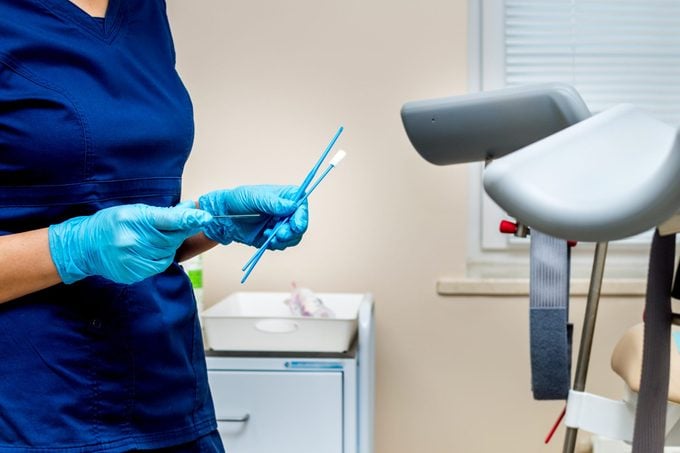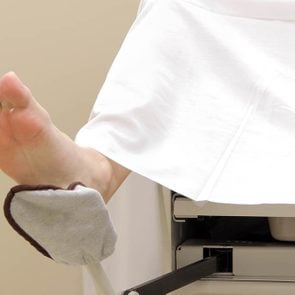How Often Should You Get a Pap Smear?
Updated: Jul. 26, 2022
Pap smears can save lives. Find out what a Pap smear is and what it tests for, as well as the Pap smear guidelines for how often you should get one.
What is a Pap smear?
You’ve probably heard the term Pap smear, but may not know exactly what it is or why people who have a cervix need them.
Although the screening procedure might be uncomfortable for some, it should be relatively painless and it’s important—even lifesaving—to get them.
A routine visit to the gynecologist may or may not include a Pap smear or Pap test.
Recent guidelines suggesting slightly fewer of these cervical cancer screenings (and starting them a bit later in life) than in the past because more people are getting vaccinated for human papillomavirus (HPV), which is a major cause of cervical cancer.
In essence, a Pap smear is a test that starts with the collection of cells from the cervix, which are then examined under a microscope to look for signs of precancerous or cancer cells. Early treatment can then prevent or stop cervical cancer before it gets started.
They are considered one of the most important cancer-prevention breakthroughs of the 20th century.
Named after the physician who developed them, George Papanicolaou, they became routine tests starting in the 1950s and are credited for dramatically reducing deaths due to cervical cancer.
How a Pap smear is done
So what happens when you have a Pap smear?
A doctor inserts a speculum—a metal or plastic device—that widens the vagina so a health care provider can visualize the cervix and brush or scrape a small sample of these cervical cells, according to Sandy Dorcelus, DO, an OB-GYN at NYU Langone Hospital in Long Island.
The cells are sent to a laboratory where they are placed under a microscope, and a technician looks for any abnormalities or changes in the cells that may lead to cervical cancer.
“Depending on the abnormality, further testing may be required,” Dr. Dorcelus says.
Why Pap smears are important
Cervical cancer
Again, Pap smears help detect and even prevent cervical cancer.
One 2012 study of 1,230 women in Sweden diagnosed with cervical cancer found cervical cancers detected by a Pap test had a 92 percent cure rate compared to a 66 percent cure rate among women diagnosed because of symptoms, according to a report in the British Medical Journal.
Another 2018 study in BMC Pregnancy and Childbirth found that a routine Pap smear during early pregnancy detected 92 percent of the cervical cancer cases.
Cervical cancer used to be the leading cause of cancer death for women in the United States, according to the Centers for Disease Control and Prevention (CDC).
Since many women get regular Pap tests, however, the number of cases of cervical cancer and the number of deaths from cervical cancer have decreased dramatically over the past 40 years.
In countries where people do not get routine Pap smears, cervical cancer rates tend to be much higher. (These are the other cervical cancer risks to know.)
HPV
Human papillomavirus (HPV) is a common sexually transmitted disease. So common, in fact, that unless they get vaccinated, nearly every sexually active person will be infected at some point in their life—although many would never know it.
There are over 100 different kinds of HPV, and most cause no obvious symptoms at all, while others can cause genital warts.
A handful of HPV types can cause changes in the cells of the cervix that could become cancer over time. (These are usually not the same type as the ones that cause genital warts.)
But here’s the thing—an infection generally has to be persistent for these changes to take place.
Many people’s immune systems will clear an HPV infection without any problem, while in other cases HPV will linger over time, causing cell damage that could lead to cancer.
In fact, other cervical cancer risk factors, like smoking, are thought to be a problem because it makes it harder for the immune system to clear HPV infections.
Since persistent HPV infections are so often linked to cervical cell abnormalities, sometimes HPV screening tests and routine Pap testing occur together. So HPV testing and Pap smears often go hand in hand.
(Here’s what it’s like to get HPV at age 53.)

Pap smear guidelines
Generally speaking, Dr. Dorcelus says that most people who have a cervix should get a Pap smear every three to five years.
“It used to [be] that women were told to get Pap smears annually, but the progression from low-risk abnormality to cervical cancer takes approximately 15 years,” she says. “Moving screening to every three to five years still allows us time to catch an abnormality without increasing unnecessary intervention.”
Limiting unnecessary intervention is part of the reason why the American Cancer Society updated their Pap smear frequency recommendations in 2020.
The new guidelines recommend screening starting at age 25, instead of age 21, because the HPV vaccine is so good at preventing infections.
Experts recommend that adolescents get HPV vaccines to protect against not only cervical cancer, but genital warts and cancers of the vagina, vulva, penis, and anus.
HPV vaccines first became available in 2006 and have led to a drop in HPV infections and cervical pre-cancer in people in their 20s (and older).
Note that there are three types of tests: an HPV test or primary HPV test, an HPV/Pap co-test, and a Pap test. The frequency may depend on the type of test.
The American Cancer Society recommends the following:
- Under 21: No screening is needed
- 21-29: HPV test every five years; HPV/Pap co-test every five years; Pap test every three years
- 30-65: HPV test every five years; HPV/Pap co-test every five years; Pap test every three years
- 65 and over: No screening if a series of prior tests were normal
These frequencies are all under the assumption that your test results are normal. Your provider may do more frequent screenings if your tests are abnormal.
Don’t automatically panic if you do have an abnormal Pap test as they are not uncommon. Most people with abnormal cervical cancer screening results do not have cancer, according to the American Academy of Family Physicians (AAFP).
If you do have an abnormal Pap smear or a test that indicates an HPV infection, your doctor may recommend a procedure called a colposcopy.
During a colposcopy, the doctor examines the cervix and applies acetic acid (essentially a vinegar solution) that will turn white where cells are abnormal.
The cells can be collected and analyzed for more details about any abnormal changes.
Based on the result, your doctor may recommend more frequent Pap smears to monitor the problem. If they are minor or low-grade changes, they could resolve on their own.
If they are more serious or high-grade changes, your doctor may recommend removal of the tissue using loop electrosurgical excision procedure (LEEP).
During a LEEP, a thin wire loop is used to remove the abnormal tissue.
Who needs Pap smears more often?
Immune compromised patients, such as those with HIV/AIDS or exposure to DES in utero, all require more frequent testing, according to Dr. Dorcelus.
DES, or diethylstilbestrol, is a synthetic estrogen used from the 1930s-1970s on women with a history of miscarriages and or preterm deliveries, she explains.
Prior exposure to this increases the risk of reproductive abnormalities, and increased risks of certain types of vaginal and cervical cancers, according to Dr. Dorcleus.
And even if you don’t need a yearly Pap smear, it’s still important to visit your OB-GYN annually.





















